Can cold water cause weight loss, is my mother-in-law turning into a reptile and why doesn't a mobile phone interfere with itself are all answered in this week's Naked Science Question and Answer Extravaganza. We also find out about a new way to keep track of your favourite online bands and musicians, and hear how the whole world harmonises - turning news into music in just three hours! Plus, in Kitchen Science, Dave pulverises an egg to explain the basis of air pressure, and for Question of the Week Diana finds out whether alcohol can rehydrate a lost traveller in the desert.
In this episode

Ivy makes nanoparticles
Ivy plants secrete nanoparticles that help them to climb walls, scientists have discovered. The evergreen plants cling onto surfaces using tiny rootlets that spring out from their stems which are very tough to prise off. On the microscopic scale these rootlets end in fingers or disks, hundreds of micrometres long. And as Charles Darwin first reported in 1876 in his monograph Movements and habits of climbing plants: "the rootlets of the Ivy, placed against glass ... secrete a little yellowish matter".
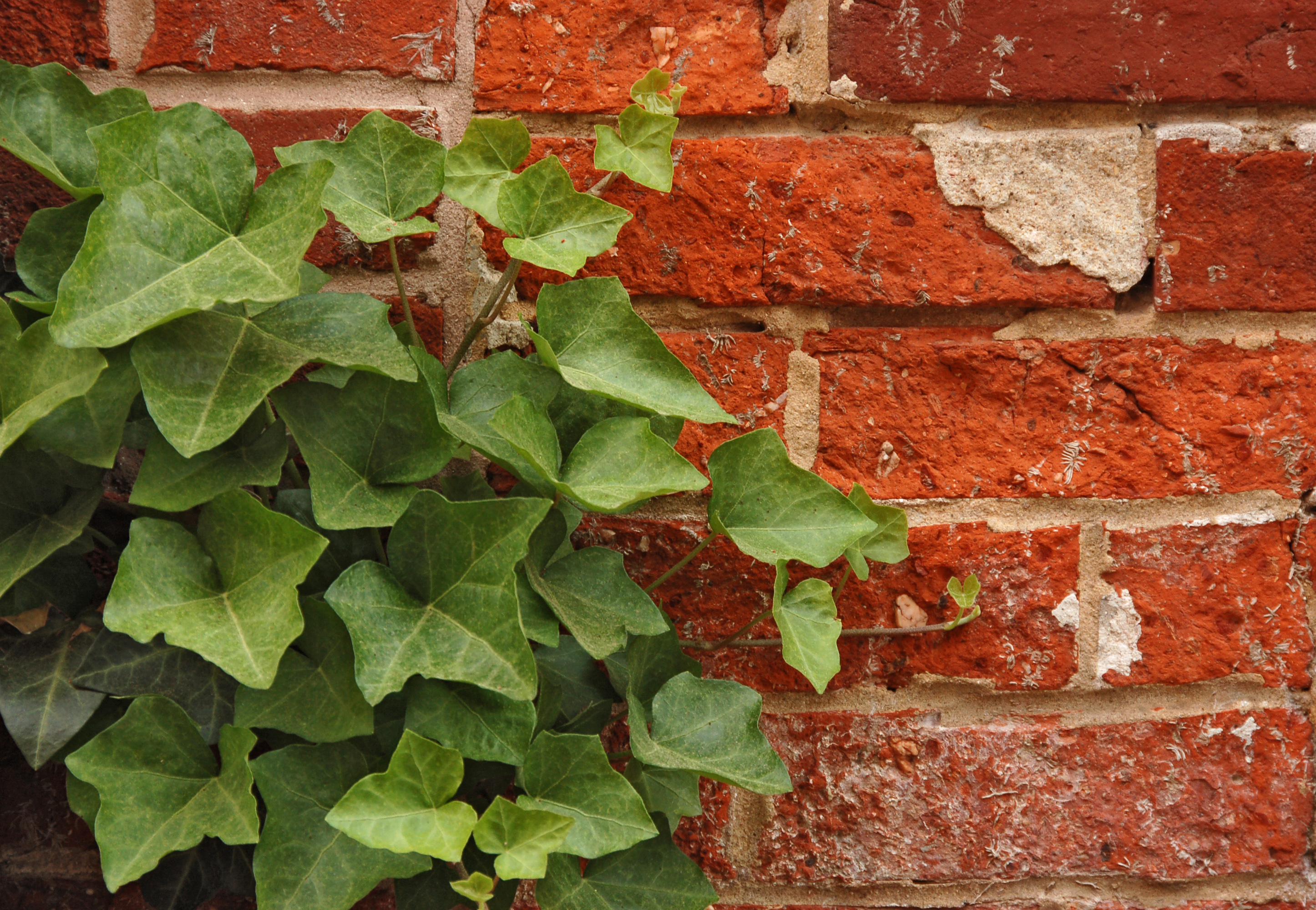 | |
| Photograph of English Ivy (Hedera helix) growing on a red brick wall. © Derek L. Ramsey |
But what this substance is, and how it helps ivy to climb, has remained unclear since Darwin's time. Mingjun Zhang of the University of Tennessee and colleagues grew Boston ivy on silicon and mica wafers, and analysed its secretions with atomic force microscopy. They found very uniform particles, 70nm across. The researchers then checked the composition of the particles with high-performance liquid chromatography/mass spectrometry (HPLC/MS). They picked out 19 organic compounds, which they suggest consist of long hydrocarbon tails and polar nitrogen, oxygen or sulfur-containing heads.
Zhang's team is now working out the mechanism by which the ivy produces nanoparticles - and he hopes to work out exactly how they help the plant stick to surfaces. He also plans to try forcing ivy to produce metallic nanoparticles - rather than synthesise them chemically. Many plants have already been used to grow nanoparticles - alfalfa, for instance, soaks up gold and silver to produce metallic nanoparticles, while extracts of camphor, lemongrass and aloe vera have been used to synthesise nanoparticles in the laboratory. But the idea that a plant would secrete nanoparticles naturally in order to help it climb is unique - and suggests a highly evolved biosynthetic pathway.
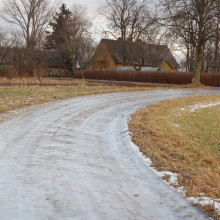
Temperature sensitive paint
Many deaths each year are caused cars slipping on ice. A lot of the problem is that it is hard to know when there is ice on the roads, so drivers can't take this into account in how they drive.
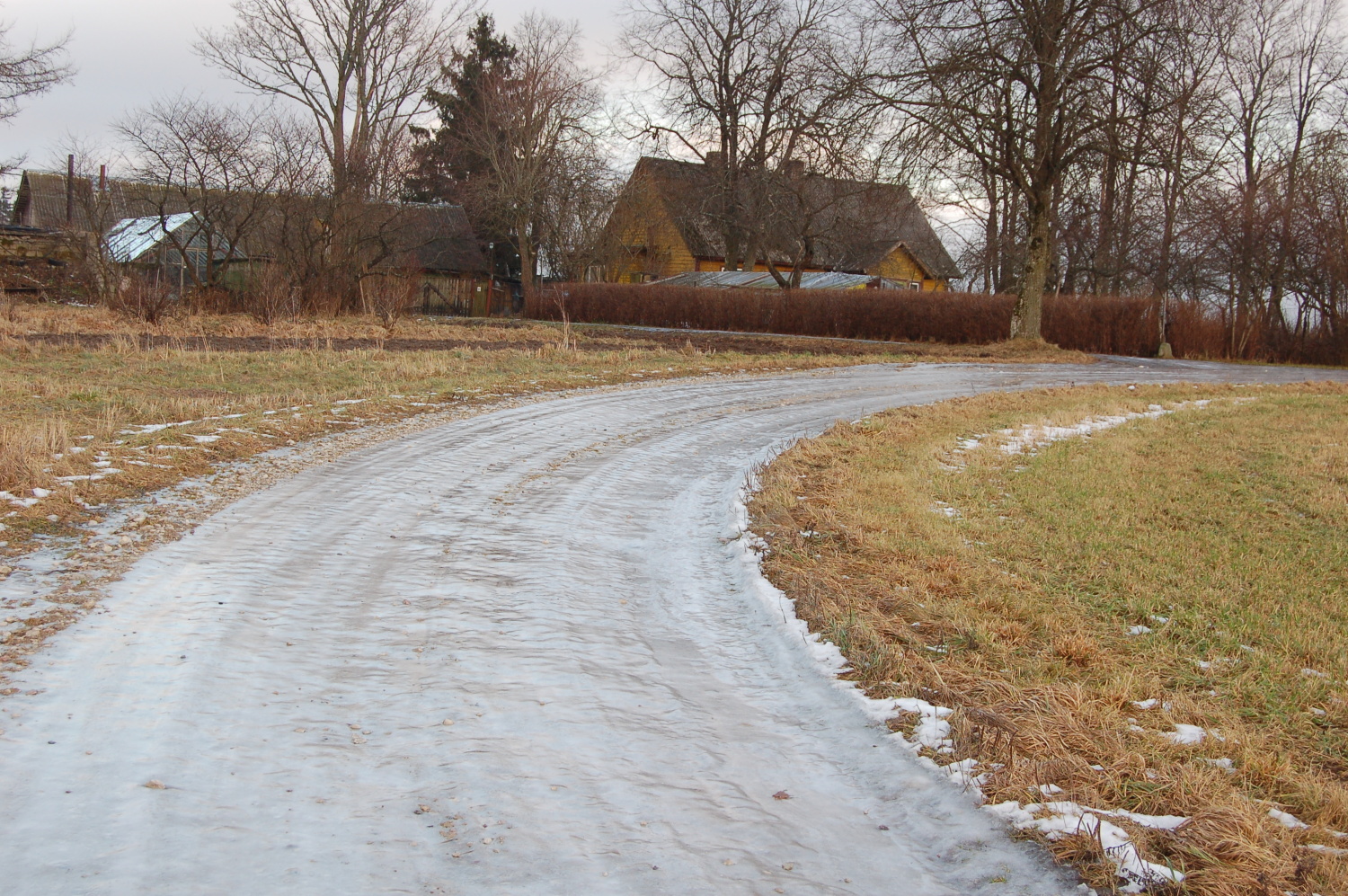 Engineers at a company called Eurovia may have come up with something that will help - Temperature sensitive varnish. The idea is to paint this varnish onto the white paint on the road, and above 1 degree celcius the varnish is completely clear. But the varnish contains a thermochromic pigment which turns pink below 1C so drivers are warned of the low road temperature where there may be ice. When the temperature increases to above 2C the pigment will go clear again.
Engineers at a company called Eurovia may have come up with something that will help - Temperature sensitive varnish. The idea is to paint this varnish onto the white paint on the road, and above 1 degree celcius the varnish is completely clear. But the varnish contains a thermochromic pigment which turns pink below 1C so drivers are warned of the low road temperature where there may be ice. When the temperature increases to above 2C the pigment will go clear again.
They have got the varnish to survive the battering it will receive on the road, but they are still working on making it visible enough at night and they may have problems with UV damaging the dye in the summer, but this marks a great step forward in using innovative solutions to make our roads safer!

Feed a cold, for definite
Scientists have come up with strong immunological evidence for why you should always feed a cold.
Writing in Physiological and Biochemical Zoology, Lynn Martin and her colleagues found that dieting deer mice, given 30% less to eat, had far fewer memory B cells, which make protective antibodies, than mice allowed to eat normally.
 According to Martin, "30% restriction in food intake doesn't affect body mass and only minimally reduces activity in deer mice, but it eliminates the long-term immune protection provided by antibodies." This means that the results could have profound implications for human health and they certainly fit with previous findings including trials in which malnourished subjects given measles vaccines responded very poorly compared to counterparts who were better-fed, and infections that are more frequent and tend to be chronic in malnourished children.
According to Martin, "30% restriction in food intake doesn't affect body mass and only minimally reduces activity in deer mice, but it eliminates the long-term immune protection provided by antibodies." This means that the results could have profound implications for human health and they certainly fit with previous findings including trials in which malnourished subjects given measles vaccines responded very poorly compared to counterparts who were better-fed, and infections that are more frequent and tend to be chronic in malnourished children.
Significantly, malnourished and self-neglecting individuals with weakened immune systems are also more likely to promote the spread of infectious diseases, like TB, because the bugs are able to persist in these people for longer, and are often present at higher levels making the patients more infectious.
So your grandmother was part right when she told you, feed a cold - but definitely don't starve a fever.
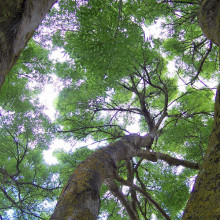
How plants avoid the shade
Researchers at the Salk Institute for Biological Studies in the US have fathomed the molecular secrets of how plants stretch and grow their way into the sunshine.
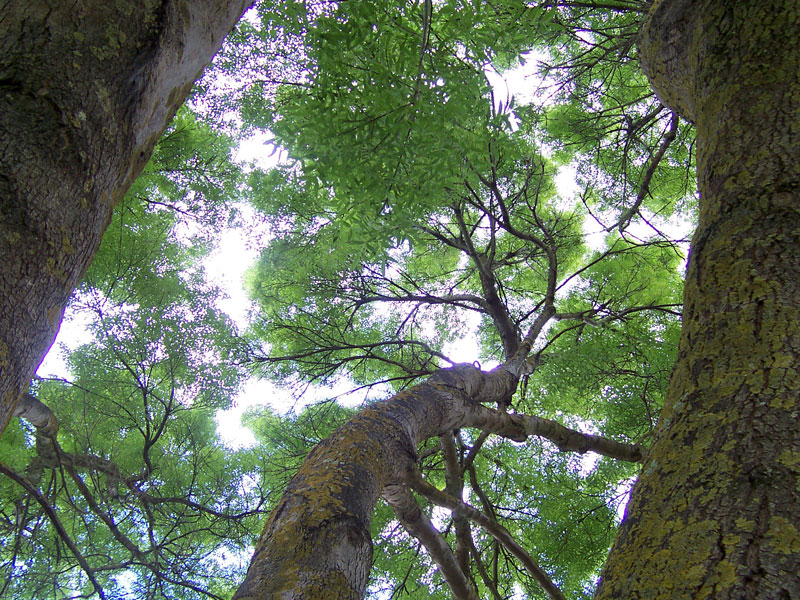 Plants can differentiate between the shade of an inanimate object and the shade of another plant, by detecting a relative increase in the levels of a wavelength of light that green plants reflect. When a plant detects competition from neighboring plants, it initiates a set of responses, called collectively the shade avoidance syndrome, synthesising a hormone called auxin that diverts all of the plant's energy into elongating its stem to reach the light.
Plants can differentiate between the shade of an inanimate object and the shade of another plant, by detecting a relative increase in the levels of a wavelength of light that green plants reflect. When a plant detects competition from neighboring plants, it initiates a set of responses, called collectively the shade avoidance syndrome, synthesising a hormone called auxin that diverts all of the plant's energy into elongating its stem to reach the light.
Even though this causes plants to grow, it diminishes its bulk of leaves, fruit and seeds by diverting all of its energy into lengthening its stem.
The researchers identified a handful of genes that play a role in the shade response, one of which encoded an enzyme with an active site that was likely to bind an amino acid called tryptophan, which plants use to synthesise auxin.
Recreating the plant's biochemistr, the team was able to confirm that the enzyme uses tryptophan to catalyse the first reaction in a three-step auxin-synthesis pathway. The new enzyme became known as tryptophan aminotransferase or TAA1 for short.
So when a light receptor in the plant detects neighbouring plants, it triggers the TAA1 pathway resulting in a rapid increase in auxin, which is transported to sites in the stem where it can stimulate growth.
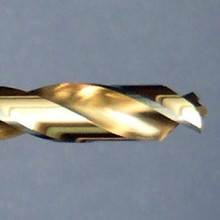
Superinsulators
We have known about superconductors for about a hundred years. Superconductors are materials in which, if you cool them down far enough, their electrons form quantum objects called Cooper pairs, and the substance suddenly looses all its electrical resistance. This means it can carry large currents with no energy losses. Superconductors are often used in MRI scanners in hospitals and in the new LHC in CERN.
Christoph Strunk of Regensburg University in Germany and associates have found a theoretically very similar state of matter, a 'superinsulator'. Normal insulators are very good at stopping current flow, but a very small amount will always flow through them. In the same way that a superconductor cannot have a voltage difference across it because it has no resistance, a superinsulator cannot have any current flowing through it.
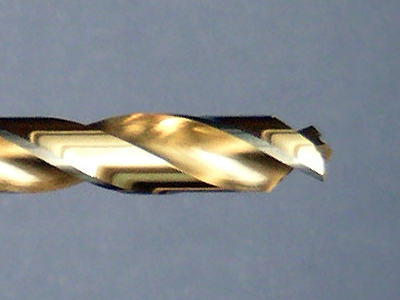 |
| Titanium Nitride is also used to harden drill bits © Peter Robert Binter |
They built their superinsulator by cooling a very thin film of titanium nitride down to below 70 thousandths of a degree above absolute zero. The film was made up of lots of grains so that the superconductor is split into lots of puddles of superconductivity surrounded by narrow gaps. At higher temperatures the Cooper pairs can jump between the puddles, carrying current. However, if you cool the titanium nitride below a critical temperature this can't happen - the Cooper pairs are stuck and no current can flow.
In theory these could be used to form a perfect battery which would never discharge no matter how long you left it, (normal rechargeable batteries lose about 1% of their charge each day, even if you don't use them) but the practicalities of keeping it cold would probably stop it from being useful most of the time. For the moment it is mostly a fascinating new state of matter, and who knows what interesting things may come of it.
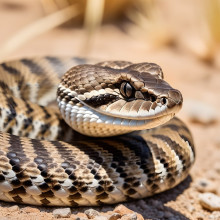
Can snakes die from their own venom?
The reason is that the venom snakes use is a mixture of proteins. Proteins are made up of building blocks of what's called amino acids. They're the same stuff, effectively, as makes up the meat in your Sunday roast. That means that if you were to eat them - say I ate a snake and ate the poison sacks - it would go into my digestive system where my stomach acid and the enzymes in my stomach would just break down the protein, so it would fall apart and it would be harmless. Venom is only actually toxic if it gets beyond the gut and it gets into the circulation of the body. That's why one snake could, for instance, eat another snake, and it wouldn't be poisoned by it. In the same way, a person who has diabetes may need to inject the hormone insulin. Insulin is a protein, so if you were to take it by mouth the digestive tract would break it down. That's why people have to inject insulin to make it work. So why don't snakes poison themselves, given they have the venom in their bodies? It's exactly the same reason that you remain healthy despite the fact that your pancreas makes a deadly cocktail of digestive juices which, if they got into your bloodstream, would kill you very rapidly. People who get the condition acute pancreatitis have a very high mortality rate. It kills people because they literally eat themselves from the inside out. The reason that they don't do that normally when you're healthy is because the enzymes are made in cells in an inactive state. They're exported from the cell into a duct which is lined with special protecting cells that stop it going back in to the body's own tissues and doing any damage. The only place it can go is down the duct and then out into the digestive tract. If you put that into the context of the snake, it's got a gland which knows how to make the proteins in the venom. They get exported into this duct which is a special holding bay, protected from the venom. It can't go back the wrong way or into the snake's bloodstream. When the snake bites you there are tiny muscle cells around those ducts and it squirts the venom down its fangs (there are ducts in there) and into the holes that the teeth have made in you. That's why the snake doesn't die from its own venom because it keeps it in a specially adapted part of the body so it can't get into the circulation. I did ask a snake venom researcher this question once and he said you can also find antibodies in snakes to their own venom, to a certain extent. They kind of have their own antivenom built it. Possibly because they have exposed themselves at low level, or been exposed during altercations with other snakes. I don't know how protective that is so there's two mechanisms there why a snake doesn't poison itself.
What are the causes of a low body temperature?
I think this is about where the temperature has been taken from. Normally with your standard thermometer it is put either under the tongue or under the armpit. This is your peripheral temperature. Although these are reasonable estimates of what your core body temperature is it's still an area of your body that's exposed to outside temperatures so it's going to be slightly cooler. A more accurate measurement would come from a rectal thermometer. Also, before you get carried away in the hospitals these days they use an infrared-sensitive thermometer that you may have seen, You put it into the ear and it beeps. It'll take your temperature pretty much instantaneously. That's just detecting infrared detected from the ear drum. It's a dark cavernous place, it won't be affected by any of the external infrared because obviously there are infrared rays bouncing about all around us. I don't think she's evolving back into a reptile.

21:05 - Wonderama at the Edinburgh Science Festival
Wonderama at the Edinburgh Science Festival
with Pi the Robot, Amy & Henry, Science Festival Communicators
Ben - The Edinburgh International Science Festival was in full swing when the Naked Scientists got to Edinburgh so Meera and I couldn't resist going along to Wonderama: the hands-on event and Edinburgh's Assembly Rooms. When I got there, I was very pleased to be met by a rather robotic sounding welcome...
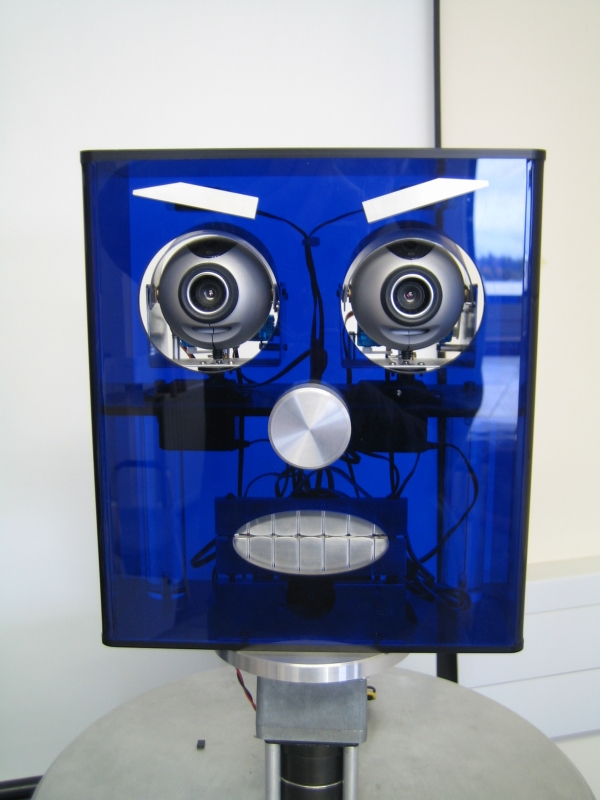 Pi - Welcome to The International Science Festival. It's great to be here. The Engineers of the University built be and brought me here to see you. As soon as I get some legs I'll be able to see a lot more of the Science Festival.
Pi - Welcome to The International Science Festival. It's great to be here. The Engineers of the University built be and brought me here to see you. As soon as I get some legs I'll be able to see a lot more of the Science Festival.
Ben - I'm here with Amy from Herriot Watt University and she's brought along Pi, a talking robot. So Amy, tell me a bit about Pi.
Amy - Pi's our intelligent robot here at the Science Festival. He's able to communicate with kids and tell things like jokes and do wee tricks as well and dance. So the kids interact with him by pressing a series of buttons on the wee keyboard. That communicated to him an action to carry out.
Ben - Is he really a robot or is he just a computer system?
Amy - What we actually have here is a computer system, no difference from what you'd have at home. It's just we've taken it apart so the kids can see the individual sections.
Ben - So how does Pi actually work?
Amy - Well, you can actually ask him yourself if you'd like to come along...
 Pi - Can I help you? My engineers have made the electronics and mechanics of a robot head. If I only had a brain. I looked in the top of my head and found nothing. Wait a minute, I saw someone putting a sticker called brain on one of the electronic boxes on the display board. Could that be my brain? It looks rather odd, not at all like a human brain. My design engineers call it a processor. Come to think of it, it's the same as a processor in the computers you have at school and at home. I also have some memory storage. That is where a computer keeps the information for days and weeks and years. If the electricity fails then that information is not lost. Thank goodness for that.
Pi - Can I help you? My engineers have made the electronics and mechanics of a robot head. If I only had a brain. I looked in the top of my head and found nothing. Wait a minute, I saw someone putting a sticker called brain on one of the electronic boxes on the display board. Could that be my brain? It looks rather odd, not at all like a human brain. My design engineers call it a processor. Come to think of it, it's the same as a processor in the computers you have at school and at home. I also have some memory storage. That is where a computer keeps the information for days and weeks and years. If the electricity fails then that information is not lost. Thank goodness for that.
Ben - So that's how Pi works but what's the future for Pi?
Amy - They're actually working at the moment on a new model which will be able to recognise facial expressions. Say if somebody's feeling upset or down the robot could recognise this and tell them a joke to cheer them up. They're also working on adding a more human voice at the moment. It is quite monotonous because it is just a computer programme that's used to communicate with users.
Ben - Brilliant, well I look forward to seeing the next generation of Pi. But for now I think I'll let him end with a joke.
Pi - Why was the robot confused?
Ben - I don't know. Why was the robot confused?
Pi - Because he was told to close his mouth and eat his dinner.
Ben - That was Pi, the talking robot from Herriot Watt University. I'm sure I left Meera around here somewhere.
 Meera - I seem to have escaped the environment of the assembly rooms now and stepped into the Amazon jungle. It's quite amazing just how much like a jungle it really looks like in here. I'm here with one of the helpers, Henry. Hello Henry.
Meera - I seem to have escaped the environment of the assembly rooms now and stepped into the Amazon jungle. It's quite amazing just how much like a jungle it really looks like in here. I'm here with one of the helpers, Henry. Hello Henry.
Henry - Hello.
Meera - This is really quite and amazing activity.
Henry - That's right, the whole room's been used as a jungle scene and we're actually standing in our camping tent and we're surrounded outside the tent by a thick, dense canopy, lots of vegetation and plants around us. In there we get the children to do different activities and listen to the sounds of the jungle. It's really realistic. We've had people come in who've been in jungles and explain that this is exactly what it's like.
Meera - So what sort of animal sounds have you got the kids listening to?
Henry - We've got lots of gibbon sounds, titi monkeys, orang-utans, crickets. We've also got bats we can hear with our bat detectors and dolphins with our hydrophone. When an animal sound comes into the jungle we get them to work out what animal that might be from. We give them little hints and clues to guide them to the right decision to which animal sound it is.
to work out what animal that might be from. We give them little hints and clues to guide them to the right decision to which animal sound it is.
Meera - There's a session going on at the moment. I can see a group of kids far in the jungle. They've got headphones and I think they're dipping microphones into logs.
Henry - That's right. In the logs in the jungle we've got little pygmy shrews. We're using microphones on probes and we're probing into the logs and trying to find out where the pygmy shrews are located. It's a bit like a treasure hunt. Not all the logs have shrews in them and the kids find it amazing to find where the shrews are located within and we tell them that's where they're living.
Meera - I guess you're helping them to become aware of animal's habitats and thing like that?
Henry - Yeah, we explain there's lots of animals in the jungle we can't actually hear so we use really good microphones and special equipment to find those animals.
Meera - There's kids over in the far corner. What are they doing there?
 Henry - We're telling the kids that's the Amazon river. We explain to them that zoologists don't often want to get into the Amazon river to try and find the animals because there's nasty things like piranhas and crocodiles that may be lurking in the depths. They have to use a hydrophone. It's an underwater microphone. We listen out for the sounds of the Amazonian Boto Dolphin. The kids found that amazing to listen to a dolphin.
Henry - We're telling the kids that's the Amazon river. We explain to them that zoologists don't often want to get into the Amazon river to try and find the animals because there's nasty things like piranhas and crocodiles that may be lurking in the depths. They have to use a hydrophone. It's an underwater microphone. We listen out for the sounds of the Amazonian Boto Dolphin. The kids found that amazing to listen to a dolphin.
Meera - What do you want the kids to leave here remembering?
Henry - We want the kids to understand that if we can't see where the animals are we use sound as a very important instrument to find where the animals are.
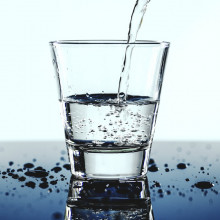
Why do I get really thirsty when I have a bath?
It could be that you're having a very hot bath and when you have a very hot bath your body temperature goes up very high...
Normally you would regulate body temperature by sweating. When you sweat water moves onto the surface of your skin. That water evaporating then carries heat away from the body's surface. That's called latent heat of evaporation and when water evaporates in this way it carries away extra heat from you and cools you down.
If you're in a steamy bathroom it's much harder for the water to evaporate, and, also, if you're submersed in the bath it's impossible for the water to evaporate from that surface so your temperature goes up. This means you can actually end up feeling as though you've lost lots of water because you're so warm and the body's reflex is to encourage you to drink.
Why does a mobile phone interfere with the radio or stereo?
The reason why your phone interferes with your stereo is your stereo is actually a very inefficient radio. It'll convert radio signals into sound signals. This used to happen when I was a kid. I lived right at the bottom of a hill of a really powerful medium wave transmitter. Because the signal was so powerful all sorts of things that wouldn't act as radios will suddenly start behaving like ones. I could pick up Radio 5 on my computer and all sorts of things like that. So basically it's picking up the mobile phone which is transmitting digital data which makes that horrible de-beep and chghghghgh type noises. You can also design the radio inside the phone so that it's designed to ignore the wavelengths which it's transmitting on. So anything about 2 or 3 GHz it will completely ignore them.
What happens when you hold your breath for a long time?
Anaerobic respiration is happening. This is so you get a different biochemical pathway that your body uses when there isn't oxygen as an energy source available. You produce lots of lactate, lots of CO2 and there's lots of hydrogen protons in the blood. That makes it acidic. Everybody has buffers in their blood to counteract the effects of this anaerobic respiration: buffers like bicarbonate which is alkaline so it means that you buffer the pH of your blood to keep it neutral. So these are chemicals that soak up acid and essentially stop the acid being just acid. You can put them into your bloodstream and the blood won't become acidic because the acid has bound onto something. That's the buffer.
You can find in some people that can hold their breath for a particularly long period of time that they'll excrete more of these buffers because they'll be producing higher levels of them [lactates] in the blood. In people who can hold their breath for a very long period of time they'll be very practised at it so they'll be very relaxed. This is true if you've ever had a scuba diving lesson you might have found you were very nervous. So when you practise with these things, the same as scuba diving and holding your breath. You can slow down your respiration and relax a lot more so you can hold your breath for longer.
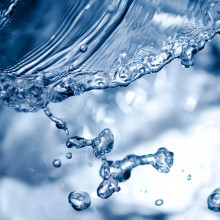
Can you lose weight (diet) by drinking cold water?
Chris: I was having this discussion when I was in Australia recently. I was at dinner with a wonderful guy. His name is Leslie Burnett and he's actually president for the Australasian Society for Clinical Biochemists. We were having this dinner and talking about this question and we were trying to work out the answer but, because we'd drunk too much of another kind of water - the water of life - we kept getting the sums wrong on the back of the napkin.
Nevertheless, this has obviously piqued his curiosity, because he's written to me. He says:
"Dear Chris, I hope you've now returned to Cambridge safely and haven't got too much of an accent following your stay in Australia and New Zealand. Regarding the dinner conversation we had about weight loss and drinking lots of water, I happened to go camping with a colleague of mine from Sydney University of Technology at the weekend. We did the necessary calculations on thermal capacity. If you recall, if most diets recommend you drink five to six glasses of tap water a day. I think you lose a lot of weight just by the act of drinking cold water because you're warming it up to body temperature and then passing it out as urine at 37 degrees. Why bother with the diet if drinking cold water is all you need to do?
Ambient temperature of the water is 17 degrees centigrade, and body temperature is 37 degrees Celsius. If you take the glass of water to be 200ml (1/5 of a litre), if you drink five of those a day that's a litre of water in a day, let's say.
It takes one calorie of energy to heat one ml of water by one degree Celsius. In other words, heating the water from your ambient 17 degrees Celsius to body temperature, 37 degrees Celsius, is a 20-degree increase. This will mean that you have to use 20 calories per ml of water, times a 1000. That's 20,000 calories to get the water up to body temperature."
Here's the problem. The definition of a calorie that dietetics use (what you see on the back of a packet) isn't a calorie, it's a kilocalorie - a thousand calories. Although it gives you the impression it's twenty thousand calories to heat the water up it's actually 20 Calories. As Leslie points out:
"Yes you will lose energy by drinking a litre of water and then passing it out as warm urine but the energy you use is only equivalent to eating a small apple. Definitely less energy than you would gain by eating a block of chocolate or a packet of potato crisps."
A packet of crisps, for example, contains about 200 calories so that's about ten times the energy to warm up the water. So you'd have to gulp down half of the Atlantic before you managed to burn off half of a chocolate bar. There's no easy answer; I'm afraid you have to go with the exercise and reduce your calories. There's no quick fix!
Do animals photosynthesise?
Chris: Yeah, this is really exciting. I remember reading about this eight years ago when people began to discover this sort of thing. There are some sea slugs which have evolved to eat algae (these are plant micro organisms) and these plants have chlorophyll in them because that's how they capture the energy from the sun and turn it into chemical energy in the form of glucose. These sea slugs have evolved to graze on the algae. They have little outpouchings called diverticula in their gut. They can put the chloroplasts which are the green bits in the algal cells that contain the chlorophyll into these little sacks. They extend all the way to the surface of the slug's skin. So the chloroplast which can capture the sun's energy like a miniature solar panel ends up under the skin of the slug. The slug also has some genes in its body which it stole from the algae donkey's years ago so it can keep these things alive. They can persist in the body of the slug for up to four months. So the slug can effectively photosynthesise. It can capture energy from the sun and use it in its own body. Dave: In a slightly less extreme way I think there are some forms of jellyfish which will keep whole algae inside them. They swim up to the surface in the summer during the day and absorb lots of sun in the algae. They eat the algae at night when they go down and hide away from all the predators.
Would light in a sealed mirrored box bounce about forever?
Dave: It depends on your mirrors. Normal mirrors which you use at home actually only reflect about 80% of the light so by the time it's gone backwards and forwards a few times every time you're going to lose 20% of what you've got left. Light moves at about 300 million metres per second so it's going to bounce backwards and forwards in your box very quickly. Even the best possible mirrors we make will lose about 1% of light every time you do it. So the answer is yes but in practicality, no. Chris: What would you do with it if you could and how would you know it was in there? If you tried to detect it you'd soak it up and you can never do that, could you?Dave: You could put some light in there and come back two months later and see if it's still there but yeah, it's not especially useful.
Why isn't there vaccine for the common cold?
Not easily because (a) there are hundreds of different types of cold virus and (b) they're continuously on the move. They're a moving target because they use a genetic form of information called RNA which makes mistakes when it copies itself and that means that they're continuously changing their shape. It's like having a facelift at the level of a virus on a daily basis so you don't recognise them from the perspective of your immune system very easily. They can easily re-infect you and a really good example of this is norovirus which is causing diarrhoea and has had 3 million people locked to a loo seat for longer than they'd like in the UK this year.
Norovirus is an example of this. It very quickly adapts and changes its appearance so, even though you've had it once, six months later you can catch it again because it looks entirely different by then.

38:26 - Tracking Tunes with Technology
Tracking Tunes with Technology
with Chris Vallance
Meera - Some recent projects in the field of technology have been in the production and tracking of music. I've come to London to meet up with our resident tech expert, Chris Vallance, for a coffee to chat about these recent developments. Chris, one piece of news is a way to follow your favourite band...
Chris V - Yes, I thought I'd talk about this because it's got a Cambridge connection. This is a start-up company called Songkick. It's a new tech venture and it basically aims to be a kind of Lastfm for live bands. [LastFM is a music recomendation service - you log in, tell it which bands you like and it will create a playlist of other music that you should like] The idea is that it knows the kind of music you like, it follows what you listen to on your computer and tells you when bands you might like come to town. There are lots of sites, if I type "Bands in town" Lastfm will also do it as well.
What's interesting about Songkick - two of the Songkick founders are Cambridge University graduates and there's the Cambridge connection - is the way in which Songkick picks up on bands that don't actually have any real big recording deal. These might be the people who practise in their bedrooms who play the pub once a week. How do you find out about bands like that? Songkick uses something very clever, it uses what's called semantic search. In other words it looks at webpages, it looks at blogs and what people are writing and tries to draw out some of the meaning using that to figure out, 'what does the person who's written this like? What kind of music do they like?'
Meera - So it can get you interested in new music as well?
 Chris V - Yeah, the idea is that it captures the bands who really just don't register on the radar of things like iTunes, for example. People who don't have music deals. I spoke to Ian Hogarth who's a founder of the site and he explained a little bit more about how their technology works...
Chris V - Yeah, the idea is that it captures the bands who really just don't register on the radar of things like iTunes, for example. People who don't have music deals. I spoke to Ian Hogarth who's a founder of the site and he explained a little bit more about how their technology works...
Ian - You've got the first recommendation engine ever for music, for live music. Pandora, Lastfm - great recommendation engines for music. We've built one that works for live music.
Chris V - What's different about a recommendation engine for live music?
Ian - The main reason is because of the size of the bands you're talking about. The conventional long tail for music there's bands that the long tail goes down and it stops when the band isn't being recorded. It keeps going for live down to a guy who's just in his bedroom on his Myspace page. Those guys are playing live but they're not really being recorded as such. We need to find a way of recommending them. There's much less data out there on them so we have developed a kind of semantic approach to getting data for that artist such that we can recommend them.
Meera - That was Ian Hogarth, one of the creators behind Songkick, showing a new way to follow even the most remote bands out there.
Chris V - The system also tracks buzz about bands which has led to some people to worry that it might be of use to ticket tout. I guess that's going to be the case with any new technology like this. It'll be interesting to follow how this Cambridge-inspired project works.
Meera - Chris, what on Earth is that?
Chris V - This was a piece of music I was involved in the writing of because I played a visit to a very interesting project called Rise and Shine. What Rise and Shine aim to do is for a whole month they aim to write a song between the hours of seven and, I think, ten about the day's news. Ok, that's kind of interesting and they're podcasting it etcetera but why is that a tech story? Well, what I thought was fascinating was the way they were using new video tools to help write the song, to help get a community around the site. For example, the song playing process was filmed on a service called Qik which allows you to stream video from your mobile phone. It was written in the guy's flat but he managed to rig up a webcam in every room so that you could see the song writing process taking place and leave chat messages. That was using a system called Mogulus. At the same time he was getting feedback and comments on the song through a system called Seesmic. I don't know if you've used Twitter which is like a microblogging site, Seesmic is like its video partner.
Why would you try and create a song about the day's news? To find out more, Rise and Shine's founder Dean Whitbread explained the rational.
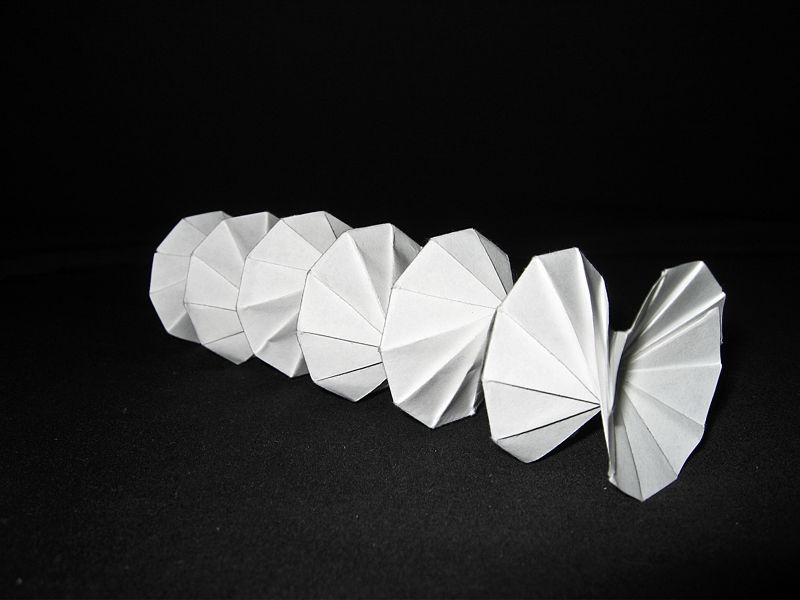 Dean - The project's called Rise and Shine, it's on riseandshine.tv and what we have to do as writers is write a song every morning which is inspired by the news. We have a lot of input from our audience who suggest topics and give us lyrics and sometimes they give us performances to do. Today's challenge has been to write on the subject of Japanese unmanned space flight and it's Origami. They're sending Origami into space to re-enter the Earth. This is quite a serious news item that challenged. From a seven am start we've got three hours. We work pretty steadily until 9:50 when we perform the song in its entirety to a live audience.
Dean - The project's called Rise and Shine, it's on riseandshine.tv and what we have to do as writers is write a song every morning which is inspired by the news. We have a lot of input from our audience who suggest topics and give us lyrics and sometimes they give us performances to do. Today's challenge has been to write on the subject of Japanese unmanned space flight and it's Origami. They're sending Origami into space to re-enter the Earth. This is quite a serious news item that challenged. From a seven am start we've got three hours. We work pretty steadily until 9:50 when we perform the song in its entirety to a live audience.
Meera - That was Dean Whitbread, one of the musical creators behind Songaday. Chris, I have to ask, are these songs actually any good?
Chris V - They're surprisingly good given the constraints. I came up with a lyric which was the song which was about the news story of the Japanese launching a paper plane into space. The lyric I came up with was, "to boldly go where no man's gone A4."
Meera - Oh, very funny!
Chris V - You see?! So, it's all a bit like that! It is all in a good cause so I don't think we want to set the quality threshold too high.

44:21 - Drink Wine or Drink Nothing?
Drink Wine or Drink Nothing?
Sue Baic, Lecturer in Nutrition and Public Health at Bristol University: Presumably by then you'd actually be pretty thirsty. Your drive would be to try to drink whatever you could but actually that would be the wrong thing to do. Any alcoholic drink over about 10% alcohol strength will actually be a net dehydrator. This means it will cause you pass out more water in your urine than it actually gives you. For example, for a 125ml glass of wine you'd actually end up passing 150ml of fluid so it'll be a net loss of about 25ml of fluid. It definitely wouldn't be a good thing to do to drink that. With beer, if you're drinking full-strength beer at 5% alcohol you'll lose about half of the water but the other half will contribute to your daily water intake.
Niall Macfarlane, Senior Lecturer, Faculty of Biomedical Sciences, Glasgow University: The common belief that taking alcohol will lead to dehydration is pretty well-supported in scientific research. The reason for this dehydration effect is that when the blood alcohol level rises it stops the release of a hormone called anti-diuretic hormone.
As the name suggests this hormone normally prevents urine production so when you lower its levels that leads to an increase in the amount of urine you produce. Consequently you can get dehydrated. However, the exact amount of alcohol that increases urine production can vary from person to person. It's safe to say that if you drink a lot that will always cause a problem. I know there's actually some use and value in that wine.
I know that alcohols are more volatile than water and that ethanol boils at only 78 degrees as opposed to 100 degrees Celsius for water. Perhaps there's some salvation there. I could open the bottle of wine in the shade, even the shade from my own body, and I should be able to remove alcohol from the wine by letting it evaporate.
If you're into cooking and you pour some wine into a frying pan then the alcohol disappears almost instantaneously. If you're out in the desert and you're in the sun the temperatures could be over 100 degrees centigrade. So if it's anywhere above 80, 90 degrees you open the bottle and the alcohol will evaporate off within 30-40 minutes. This would leave a liquid to hydrate and provide energy for myself.
Given that situation, perhaps I could take myself to have a few glugs and get a party going...
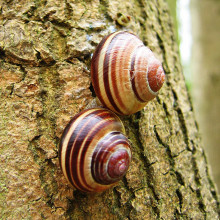
Where do snails go in summer?
They hide! Snails need to maintain moisture on their skin at all times. So in hot, dry weather they don't want to be losing all that moisture. Also, in the light of day, they're very exposed to predators, so they tend to hide away. If you lift up a few rocks or big plant pots in your garden, you'll probably find them there!
How efficient are energy saving light bulbs?
They're definitely a lot more efficient than normal light bulbs. They do take more energy to make than a normal lightbulb but the amount of energy they save in their lifetime is much more than the energy you lose in making them.
Why does adding salt make water boil more vigorously?
The reason for this is that the salt crystals (you can put sugar in it and do the same thing) act as what are called nucleation points. They make it much more easy for bubbles of the vapour which is the boiling bit of water at the bottom of the pan to form. It's hard for a bubble to form in the first place because of the water crushing in on it because of the surface tension if you like. Small bubbles are very hard to form and if you put crystals in then they disrupt the structure of the water, they make it much more energetically favourable for a bubble to pop into existence. That's why you get this intensification of the boiling point.
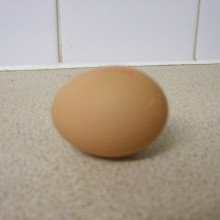









Comments
Add a comment